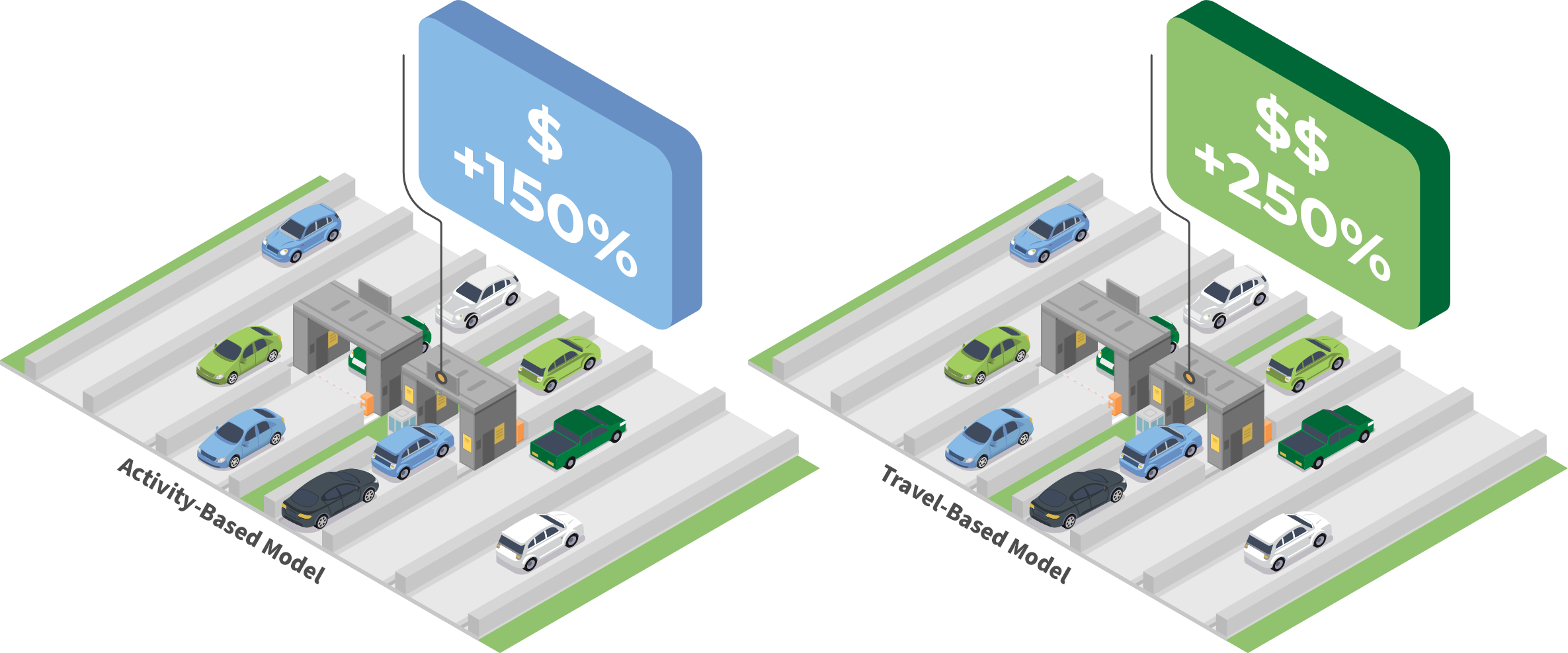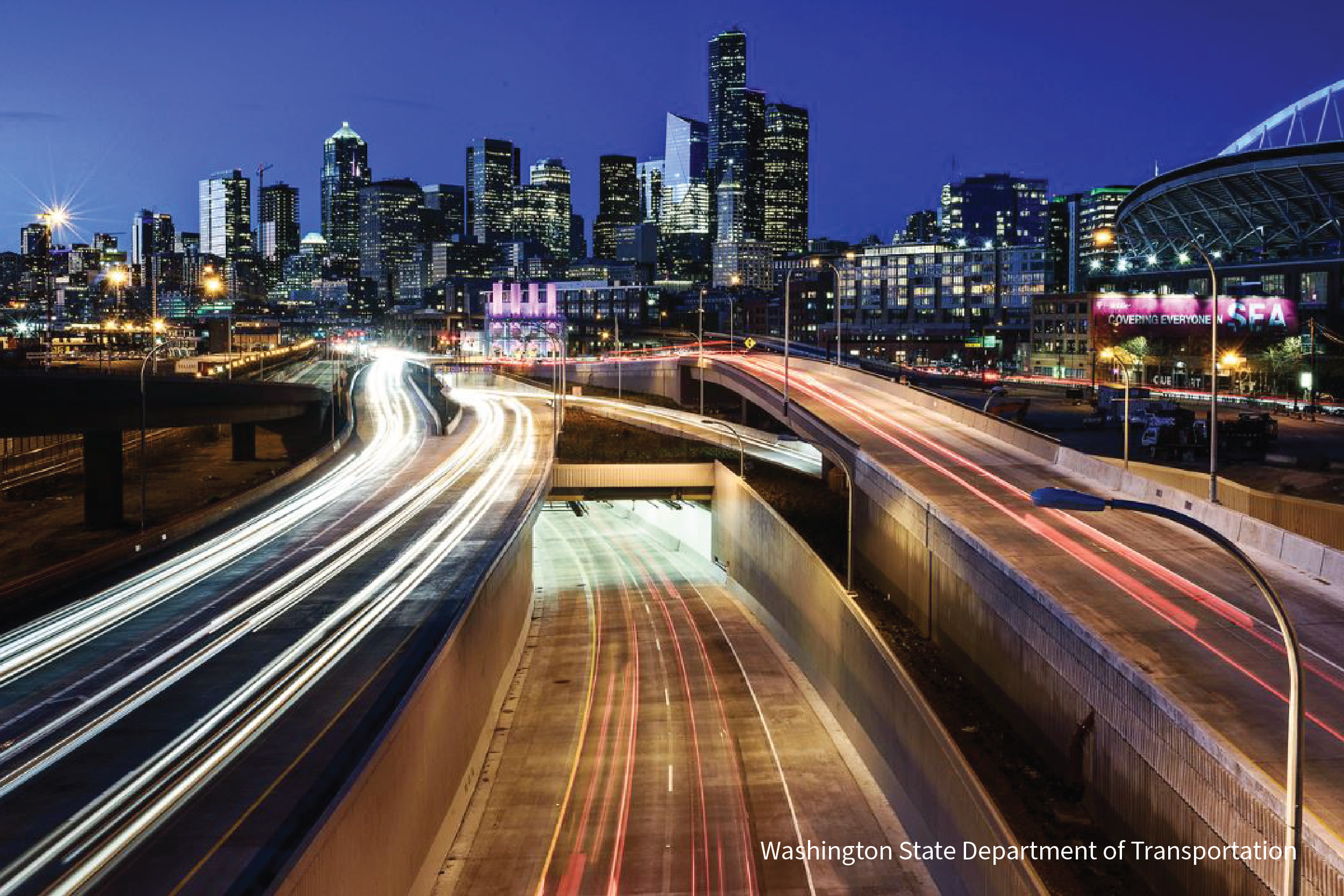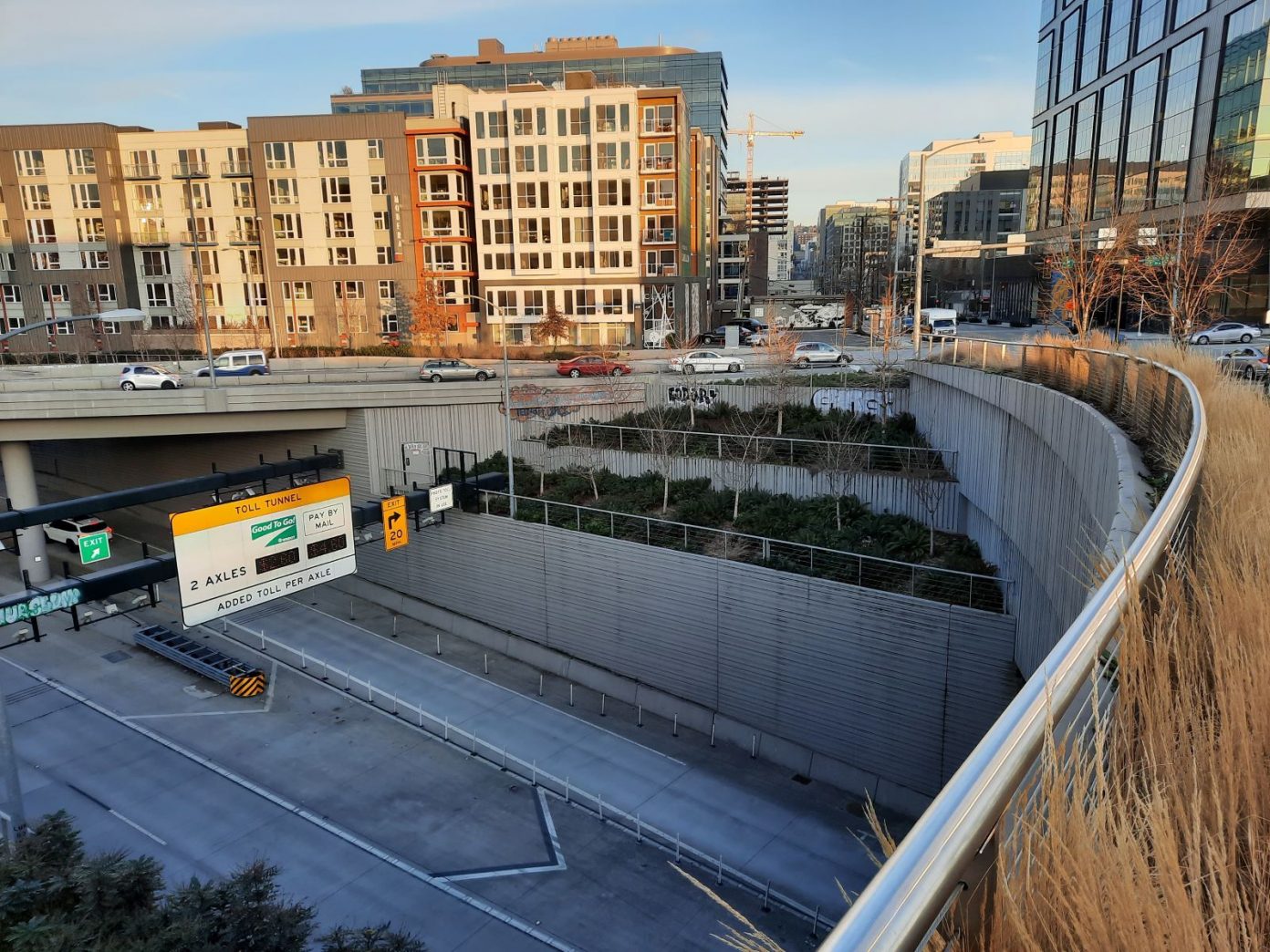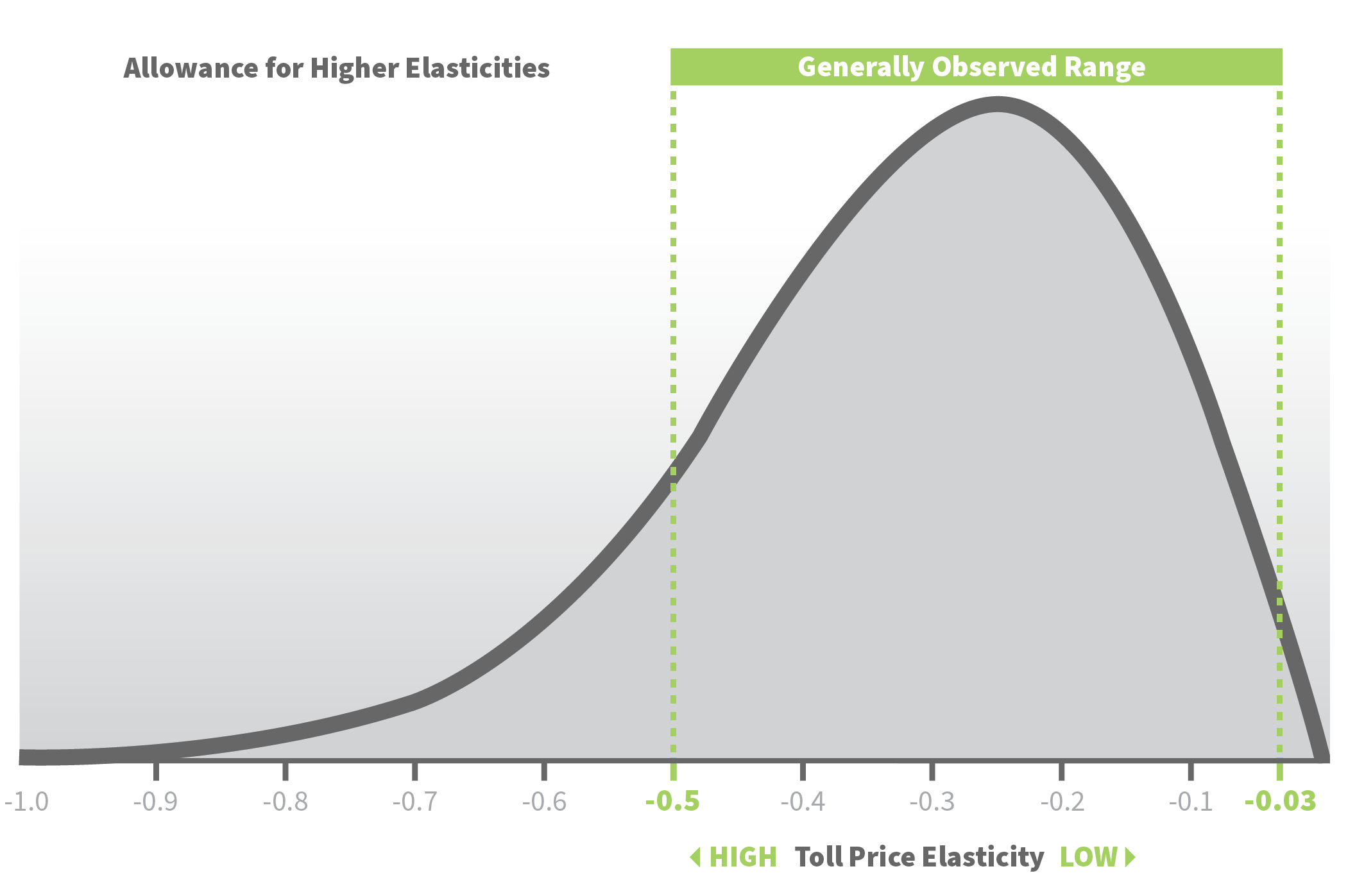Understanding Traveler Behavior
Price Elasticity & Transportation Economics – Part 2
Understanding Traveler Behavior
Price Elasticity & Transportation Economics – Part 2
This post expands on those concepts by integrating elasticity data to gauge how price changes may affect traveler behavior on SR 167 under the previously examined road pricing scenario. Price elasticity measures how changes in price, such as a new toll, influences travel demand for a thing, in this case a travel corridor. In congestion pricing, both the monetary and travel time costs change, as pricing aims to reduce travel time and improve reliability. The price elasticity of the SR 167 corridor users can offer additional insights into modeled results, revealing the cost increase that may be required to achieve the observed travel reduction in each model.
For further context, we looked at recent research summarizing roadway pricing experiences and a local example, the tolling of the new SR 99 tunnel through downtown Seattle in 2019. Once completed, the SR 99 tunnel operated toll-free from February until November 2019, providing an excellent case study for understanding the price sensitivity of local drivers. The cost-recovery pricing (tolls that repay the costs of building and maintaining the tunnel) through the SR 99 tunnel informed the initial toll rates of $1 during off-peak hours and $2.25 during peak hours. While the Washington State Department of Transportation (WSDOT) anticipated a 50% diversion of the 75,000 daily vehicle trips through the tunnel, only about 30% of pre-toll daily traffic were found to divert following introduction of the toll.[1] According to WSDOT, “While daily volumes indicated that drivers experimented with alternative routes and modes, most changes were temporary and remained close to baseline averages.”[2] The 30% diversion rate aligns well with draft research from worldwide toll road sector expert, Robert Bain, who found that about 28% to 40% of baseline traffic diverts after a roadway is tolled, based on over 20 case studies.
Additional research from Robert Bain suggests that typical traffic volume elasticity to tolls is between -0.03 to -0.5, and is influenced by factors such as alternative routes, traffic congestion, and ease of access to the tolling system. Ease of access refers to people unfamiliar with or lacking a desire to learn or acquire the technology to engage with the tolling system.[3] In this case, using a simple calculation, the price elasticity of SR 99 was approximately-0.2 (indicating a 2% reduction in vehicle trips for every 10% increase in price).[4]
SR 99 has an abundance of alternative routes and transit options serving downtown Seattle, compared to limited alternate options for travelers using the SR 167 corridor. Therefore, the price elasticity of SR 167 corridor travelers is lower than that of SR 99 corridor travelers, and likely approaches -0.1. This means that to achieve the results observed in the ABM from our first post in this series, costs would need to increase 150% if one were to be informed solely by the ABM, compared to a 250% cost increase if one were to be informed solely by the trip-based model results. That’s a pretty big difference, where knowledge of which model might be best suited for the task at hand, as well as how price elasticities work, can help steer you in the right direction.
Taking a step back, understanding these economic drivers of travel behavior is crucial for decision–makers and can guide responses to community concerns about the introduction or expansion of tolls. For instance, introducing new transit options along SR 167 could provide alternatives to driving and connect Equity Priority Areas (EPAs) to key employment centers. Outreach efforts could ensure all travelers understand and can adapt to the Express Toll Lanes (ETLs) and how dynamic pricing could affect their travel times and wallets.

Thus, an understanding of economics is indispensable to understanding costs, benefits, and trade-offs in modeled scenarios. Price elasticity not only reveals traveler responses to price changes but also highlights the importance of project improvements like transit options and effective outreach programs. This understanding, coupled with understanding community goals and values, is essential for effective decision-making in a world that requires making the best use of our resources.
Stay Informed: As tolling and pricing mechanisms evolve, their impact on traffic and communities will change.
With a collective understanding of transportation economics, we can drive towards a more equitable, efficient, and informed future. Join the conversation today!
[1] https://www.theurbanist.org/2019/11/08/sr-99-tolling-starts-tomorrow-and-could-divert-traffic-to-city-streets/
[2] https://wsdot.wa.gov/sites/default/files/2021-10/Toll-99-Performance-Monitoring-Report-3%2520Month%2520.pdf
[3] https://www.vtpi.org/elasticities.pdf
[4] Using the 2019 IRS mileage reimbursement rate of $0.58 to estimate the cost of the trip through the tunnel.

Marissa Milam
Sr. Planner, SR 167 Technical Lead
Email Me

Eric Womeldorff
Transportation Economics Lead
Email Me





